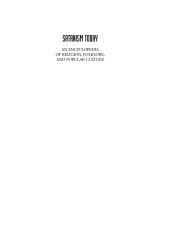I. VAMA MARGA Foundations Of The Left-Hand Path - staticfly.net
I. VAMA MARGA Foundations Of The Left-Hand Path - staticfly.net
I. VAMA MARGA Foundations Of The Left-Hand Path - staticfly.net
You also want an ePaper? Increase the reach of your titles
YUMPU automatically turns print PDFs into web optimized ePapers that Google loves.
only vaguely tells us how his or her practices are viewed within an abstract<br />
moral code of dubious value. <strong>Left</strong>-hand and right-hand, if used precisely<br />
rather than poetically, can tell us exactly what a magician's procedure and<br />
techniques actually are.<br />
<strong>The</strong>urgy<br />
Antiquity also provides us with other descriptions of specific branches of the<br />
magical art that are still useful today, although they must be applied with<br />
care. <strong>The</strong> Greeks spoke of a form of magic known as theourgia, a<br />
combination of the words theos = god and ergon = working. <strong>The</strong>urgy, then<br />
and now, is thus the working of magic that brings the magician into contact<br />
with divine beings. <strong>The</strong>urgy presupposes that the magician possesses some<br />
sort of theological philosophy concerning the existence of divine or<br />
praeterhuman intelligences and entities. <strong>The</strong>refore, those magicians whose<br />
theology is basically atheistic could not be said to be theurgists. In essence,<br />
whenever the magician performs magic that invokes or evokes a god of any<br />
kind, he or she is technically practicing theurgy. Invocation, traced to its<br />
Latin origins, is literally to call in or on a deity (in = in vocare = call), while<br />
evocation is to call forth, or to summon. In the Middle Ages and during the<br />
magical revival of the ni<strong>net</strong>eenth century, theurgy was deemed to be "greater<br />
magic", more acceptable than the so-called "lesser magic" that dealt with<br />
demonic beings in the sense that contact was sought with the higher (thus<br />
greater) order of divine beings.<br />
No matter what deity is summoned during such operations, the<br />
theurgist is performing the sacerdotal function of priest or priestess of the<br />
deity, forming a human conduit to the divine realm. <strong>Of</strong> course, if no such<br />
contact is made, we arc merely speaking of delusion, a common enough<br />
occupational hazard of all magicians. Considering that the majority of<br />
readers of this book will be concerned with evocation and invocation of<br />
deities often condemned by other religions as daemonic (another loaded<br />
word calling for later contextual definition), such differentiations as<br />
greater/higher and lesser/lower are fairly irrelevant to our objectives.<br />
Additional confusion on this point has been caused by the use among some<br />
154<br />
initiatory schools of the phrases "lesser black magic" and "greater black<br />
magic", which rather arbitrarily and ahistorically assign new meanings to the<br />
traditional definitions of lesser/greater forms of magic known for centuries.<br />
As we are determined to create lesser rather than greater bewilderment, we<br />
have avoided incorporating phrases that tend to be obstacles to clarity, or<br />
that are particularly associated with any one modern sectarian view or the<br />
other. It's for this reason that we also prefer the traditional word "magic" to<br />
the currently popular "magick", with its specifically Crowleyan<br />
connotations.<br />
We consider that the sex magician is practicing theurgy whenever he<br />
or she invokes or evokes any non-human entity during the performance of<br />
erotic-magical operations. Examples of erotic theurgy include the seeking of<br />
initiatory understanding through ritual sexual intercourse with a chosen<br />
divine intelligence, astral sex with succubi or incubi, or using an excess of<br />
sexual ecstasy or its aftermath to temporarily become a certain deity, among<br />
an infinite number of other options. It is the task of each individual magician<br />
to determine whether those phenomena that seem to function as deities or<br />
demons are independent beings existing free of human thought, or if they are<br />
manifestations of one's own mind. It is the way of the right-hand path, with<br />
its emphasis on bhakti or devotion, to insist that its initiates accept a religious<br />
vision of a given deity out of blind faith alone. <strong>The</strong> left-hand path approach<br />
to theurgy is far more concerned with awakening the divine aspect of the<br />
magician him/herself.<br />
<strong>The</strong> rites of the traditional Vama Marga are theurgic in that they are<br />
almost always focused on the sexual interplay between Shiva, the male
















